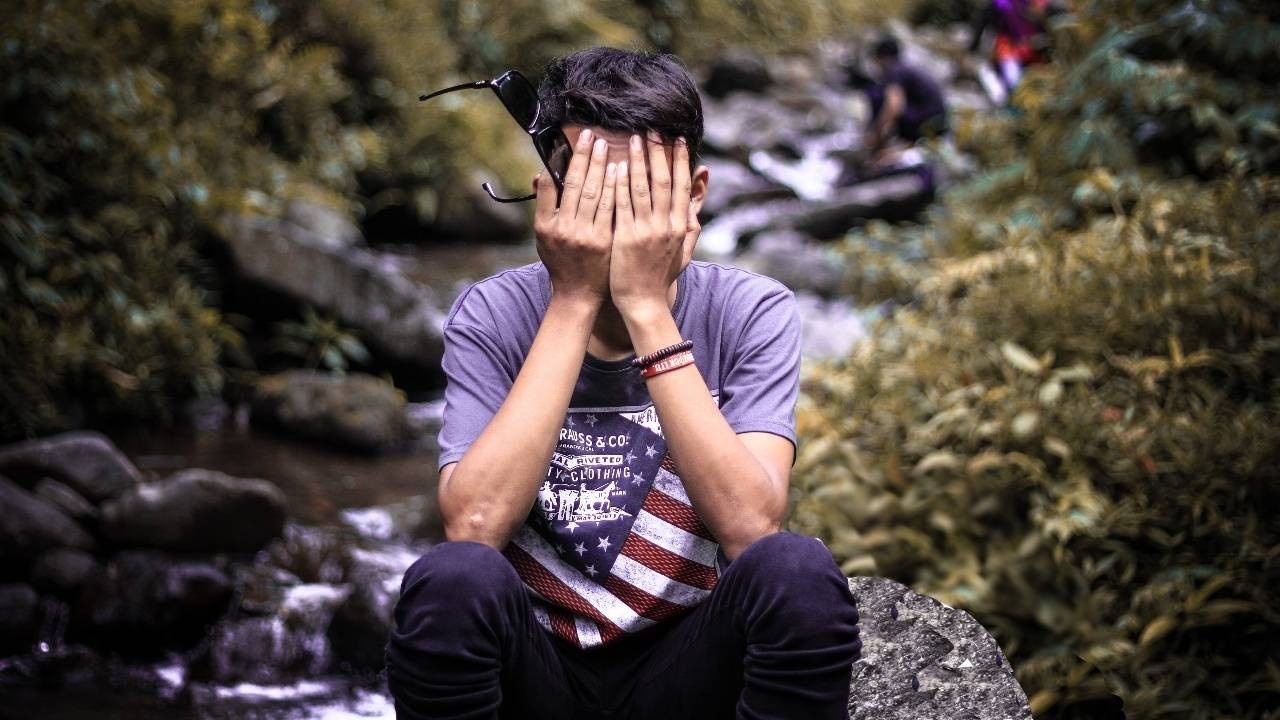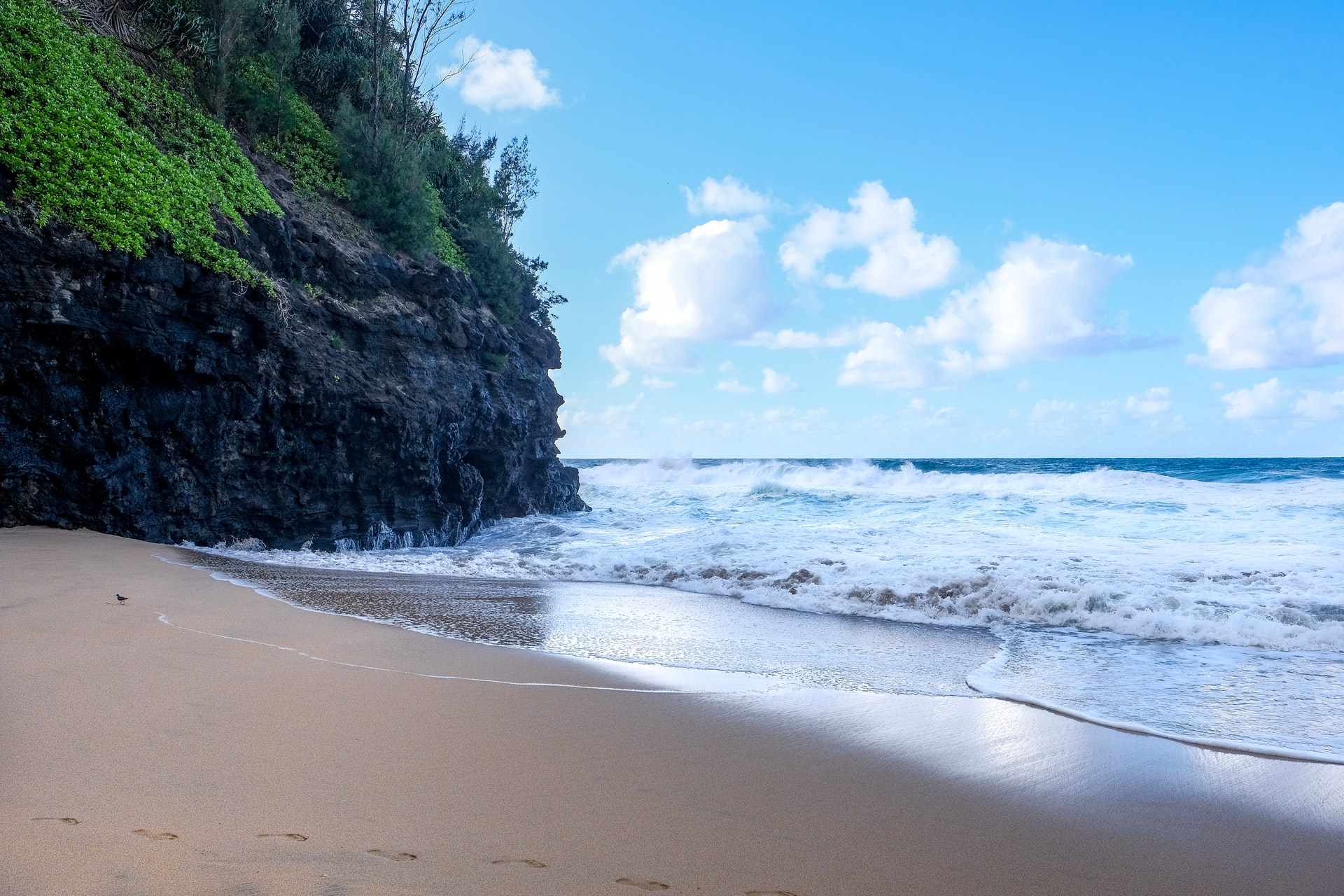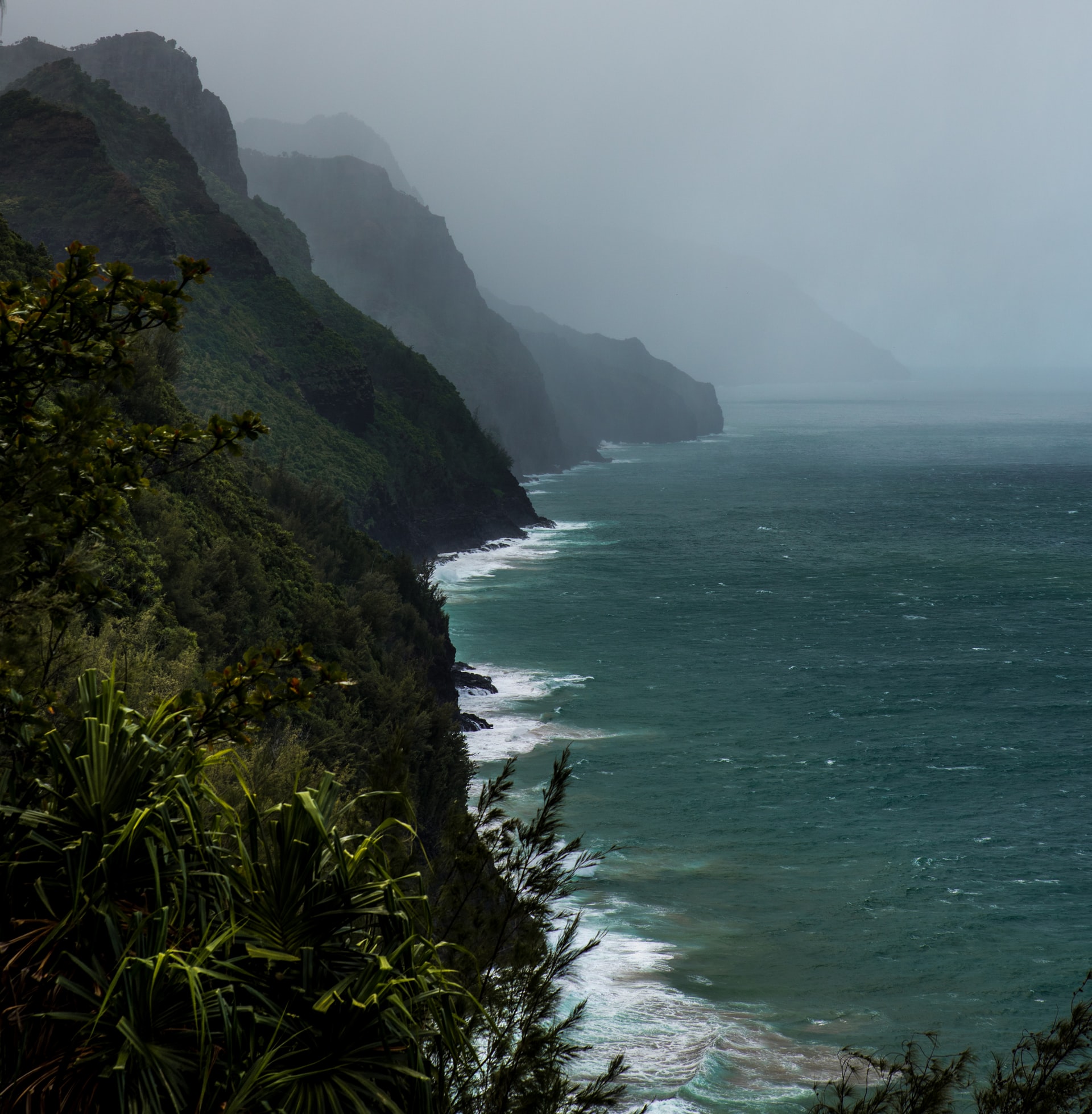
Completing the Kalalau Trail is no easy feat. So you want to be prepared, bring the right gear, and make good decisions. And yet, more often than not, people make mistakes that get them into varying degrees of trouble.
Here are the top blunders:
Underestimating the Trail
Let’s get right to point: this trail is anything but easy. With 11+ miles, over 3,000 ft cumulative elevation gain, rough terrain, heavy pack, stream crossings, ledges, heat, rain, and plenty of other small and big challenges, it’s not for the unprepared and fainthearted. This is not a let’s-go-for-a-quick-hike Sunday afternoon stroll.
You’ll want to be prepared and ready. In addition to the right gear and good general preparedness, this means being in the right physical condition. You need endurance, strong legs, good balance, but also core and upper body strength. For me, this means targeted training for 2-3 months to get into the proper shape. (I’ll post more about my training program in the future.)
So don’t take this trail lightly and you’ll also have more fun along the way.
Not doing the Homework
Yes, you can just “wing Kalalau”, but you shouldn’t. There’s plenty to think about and plan for to make it comfortable and as safe and enjoyable as possible.
One night in camp, at about 9:30 PM, headlights appeared in the dark and a group of 3 hikers appeared and started setting up camp. I started chatting with them the next morning and it turned out they had started the hike around 8 AM, which makes it about a 13-hour odyssey. This group had hiked the last 2 hours in pitch black and ended up having to cross Kalalau Stream in the dark.
They weren’t out of shape or ran into trouble. From what I gathered:
- The two women had found the trail online and gotten permits. Their male companion had just tagged along without knowing what they were getting into or what to expect.
- They got pretty scared at Crawler’s Ledge, which undoubtedly slowed them down.
- They brought heavy DSLR camera gear, including a full-size tripod and stopped very often for pictures.
- With the heavy gear and all the breaks, they didn’t plan and monitor their time well.
The experience from the Ledge left the women so frightened that they didn’t think they could make it back and so they tried to find a boat or even helicopter to get them out (to no avail).
It also turned out that they hadn’t brought enough food and ran out. On top of that, they had a battery pack but no charging cable for their satellite communicator.
This is NOT the kind of experience you want to have. So do your homework and know what you’re getting into. (Check out the Hiking Kalalau video course which provides plenty of information, so you know what you’re getting into.)
Starting too Late
It typically takes 7-10 hours to finish the trail, depending on conditions, how fit you are, and how many breaks you take. In case of doubt, plan for a longer time, so you can enjoy the trail without feeling rushed. (There are plenty of great scenic spots and photo opportunities, so you’ll want to have time to stop.)
You definitely don’t want to find yourself having to race to make it into camp before dark or, worse, hiking with headlamps and crossing Kalalau Stream in the pitch black.
So usually, that means starting early. Example: If the sun rises at 7 AM and sets at 6 PM, you don’t want to start later than 8; preferably 7, so you still have time to set up camp, take a shower, and make dinner.
Some like to start in the dark, but personally, I prefer to see well.
Too much Weight
Few things can make you as miserable and slow you down as too much weight on your back. Keep in mind that while your heavy pack might feel kinda “doable” when you start, you will be struggling with it for many more hours to come. Furthermore, a heavy pack also raises your center of gravity, makes balancing tougher, and makes you more susceptible to strong winds - all good reasons to reduce weight.
The two main causes for too much weight are (obviously) packing too much stuff and bringing items that are necessary but too heavy. While I’m a big fan of being prepared and planning for various eventualities, I always ask myself: Do I really need this? And if so, is this the lightest option? I have replaced many items with lighter ones and trimmed collective weight that way (look for “ultralight” gear). And I bring only true necessities and very few luxuries. I’m skipping the heavy Swiss Army knife, the water bladder, cookware (except for cup & spoon), and book. I swapped tent, pad, and sleeping bag for hammock and bag liner. What I’m not skimping on is the portable charger for my electronics, batteries, and food for an extra day or two (just in case). And I do bring instant coffee and lightweight headphones. I manage to limit my pack weight to about 30 lbs, including water.
Also, keep in mind that there are no trash cans and you need to pack out everything you bring.
Lastly, as laid out in my post on water management, there are a good number of water sources, especially on the second part of the trail, so it’s not necessary to carry too much heavy water.
Tip: Grab all the gear you think you need, put it in your pack, weigh it, and do a solid test hike or even an overnighter if you can. Then start throwing stuff out! You will be grateful you did!
Not enough Food
While overpacking is certainly an issue, not bringing enough of the essentials is another. I plan for three solid meals a day (warm breakfast, cold lunch, and warm dinner). Snacks and small in-between bites are more of a luxury, but fueling your body properly on hiking days is key, so I bring bars and small, energy-dense foods for those days as well. On your journey in and out, you’ll be burning lots of calories, so be prepared.
While it’s tempting to bring only stuff for exactly the meals you’re planning on having, plan for at least one or two extra days. Why? You never know what will happen. If you get stuck on the far side of a stream for a day or two and can’t cross and hike out, you’ll be happy you have enough food to sustain yourself.
Out of Power
Electricity is important, even in paradise. It powers your phone (which serves as camera, entertainment device, GPS or map for some, and - in my case - interface to my satellite communicator), GPS, personal locator beacon/satellite communicator, headlamp, camp light, etc. Solar panels sound like a great idea, but since they are still prohibitively heavy (and rely on sunlight which you may not always have), you have to “pack in” your power.
On my first Kalalau adventure, I brought a 10 mAh battery pack and it ran out of juice on my last day, leaving me with only however much power was left in my various devices. While that worked out okay, it’s unnerving. I now use a 20 mAh power pack, despite the weight. They do sell units with built-in solar panels, which look tempting, but not only are they even heavier, the reviews show that their recharging time is typically several days, which makes them mostly useless. The only item where solar works well is my camp light.
When you go up into Kalalau Valley to explore, don’t forget to bring the power you’ll need. Navigation can be tricky in there and you don’t want to run out of GPS juice while trying to find your way back to camp.
For items requiring batteries like your headlamp, check how long they’re supposed to last and then bring backup batteries if needed. Think about how many “dark hours” there are between dusk and dawn to figure out how long you’ll need light.
Battery packs work well, but only if you have the right cables to charge your devices! So take a look to see if you need USB-A, micro USB, USB-C, or some exotic variant and bring what you need. I have seen people asking for help because they forgot the charging cable they needed for important devices.
Crossing Streams at High Water
As you might know from the trail info, you have to cross three streams to make it to the end (not counting all the little creeks). Those streams are usually not a problem, but with heavy rains at wherever their water source is, there is a chance of (sudden) flash flooding. These floods can start very quickly, think seconds! (Check out this sobering video.) This can happen even if there is no rain where you are.
It is extremely dangerous to cross these streams when the water level is too high, especially when the water is moving rapidly. The water is very powerful and especially with a heavy pack on your back, it is very easy to lose your balance and get swept away, which is likely to cause serious injury or death.
A good rule of thumb is this: If the water is higher than mid-thigh, don’t cross. So if the water is too high, don’t cross. Wait it out, which can be minutes or - in the extreme case - days. Getting stuck is not unheard of (2016, 2020), but still better than the alternative. So plan for bad weather with extra food and rain gear and don’t cross raging or high streams!
Swimming
The beaches at Hanakapi’ai and Kalalau are gorgeous and look inviting. And who doesn’t want to cool off after a hard hike?
However, not only is the surf often quite powerful, there commonly is a strong current or drag as well. Even good swimmers can easily get in trouble. Hanakapi’ai ranks as one of the most dangerous beaches on Kauai and drownings happen on a regular basis.

Kalalau Beach - while maybe not quite as treacherous - should also not be underestimated. Just a few weeks ago, there were reports of a woman who had to be airlifted due to serious neck injuries she had sustained while in the water there.
That said, I personally have gone into that water, but only when the surf was very calm and only waist-deep.
If you decide to go in, please do so with extreme caution! If you need a good cooling off, consider the Kalalau Stream instead as an alternative.
No Water Filter
Stream water often looks very clear and has no bad taste. While the majority of visitors use filters and other ways to treat the water, I do run into folks who feel quite comfortable just drinking the water as is or with minimal filtration. They claim they’ve done this a lot and “never had any problems” and that the water is “naturally filtered”.
Don’t do it. As I have laid out in my post about water treatment, there are plenty of things to worry about, especially Leptospira, which can cause serious problems, including death. Symptoms may only develop weeks later, so people may not realize they’re related to their Kalalau adventure. Treat your water appropriately and be safe.
Not Prepared for Rain
Summer is considered the “dry period” for Kauai, but that doesn’t mean that it won’t rain. Rain is something you should be prepared for, even if the sky looks nothing but friendly and clear. As you progress through valleys and various altitudes, rain and the accompanying wind do occur frequently. While the local weather forecast is useful for big weather systems, it’s not very good at predicting local weather, especially in the remote pockets of Kauai with unique topographies.

So be prepared for rain! The most obvious gear item you’ll need is a decent rain jacket. But also think about the trail getting very muddy. Hiking poles are a good idea anyway and will help in slippery conditions. Some folks bring leg gaiters as well and I’ve even seen microspikes, although I personally think those are overkill. (I started bringing lightweight gaiters after getting very wet legs and water into my shoes from walking through overgrown parts of the trail where the leaves had lots of water on them from recent rains. Brushing against them quickly resulted in water running down my legs into my shoes.)
You’ll also want to have a rain tarp for your hammock and a rain cover for your pack. Bringing water-resistant and quick-drying gear will make things easier when stuff does get wet.
No Contingencies
Once you’re on the trail for several days, you’ll have to make do with what you have brought. But, even if you brought all things you’ll need, gear can fail or be lost or damaged. That’s where thinking about contingencies can help, ideally while you’re still planning your adventure.
A few examples:
- What if my water filter breaks? - I can still treat water with my Steripen and avoid the worst.
- What if a shoe has issues? (I’ve seen it happen twice where a sole detaches from a shoe!) - I can hike in my Keen water sandals if necessary.
- What if my bag liner is too thin and I’m freezing? - I can use my emergency blanket for insulation.
- What if my lighter runs out of gas? - I can use my Firebiner to light my stove.
- What if I run out of stove fuel? - While not ideal, I can still hydrate my backpacking meals with cold water and eat them.
- What if my GPS fails or runs out of juice? - Since I downloaded maps to my phone, I can use that as a backup.
- Etc.
While some of this may seem overly paranoid, it will increase your preparedness and confidence and maybe highlight some changes you’ll want to make to your gear. And over the years, there have been at least three occasions where I did have to invoke my contingency plans!
With good preparation and planning, the right gear, and good decisions, it’s much more likely that you’ll enjoy the mind-boggling experience of completing the Kalalau Trail and stay out of trouble. So avoid the common mistakes above and have fun!
Have you seen people making crucial mistakes? Post a comment below and let me know!
Stay connected with news and updates!
Join our mailing list to receive the latest news and updates from our team.
Don't worry, your information will not be shared.
We hate SPAM. We will never sell your information, for any reason.

